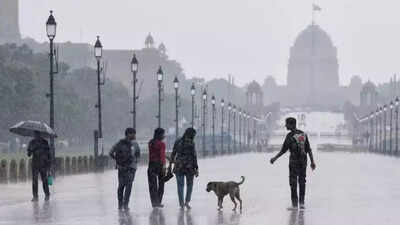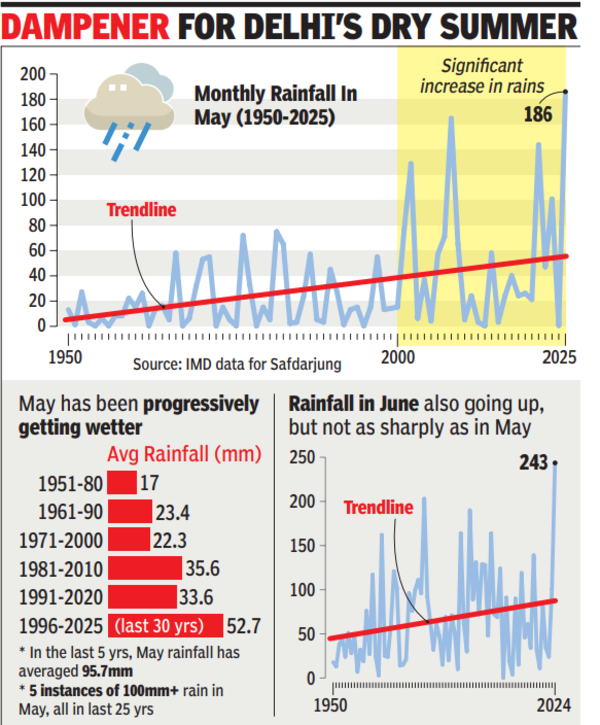ARTICLE AD BOX

NEW DELHI: Delhiites this month experienced the wettest May since record-keeping began in 1901. This wasn't a one-off event but another pointer to a dramatic change in Delhi's summer weather.
Since 1951, there has been a three-fold increase in average rainfall in May, with the frequency of dry months of May reducing by nearly half along with a sharp rise in months of heavy rainfall.

This points to a sharp shift towards wetter days in May, with the trend getting even more pronounced in the last five years, shows a TOI analysis of data from Delhi's main weather station Safdarjung.Average rainfall as high as 95.7mm in May in past 5 years Consider this.
During the 30-year period from 1951 to 1980, the month of May on average recorded 17mm of rain. In the last 30 years (1996-2025), this increased nearly 3x to 52.7mm. In the past five years, this average has been as high as 95.7mm. During 1951-1980, half of May months (15) were mainly dry with total rainfall of less than 10mm. This number has reduced to nearly a fourth (8) in the latest 30-year period.

In 50 years from 1951 to 2000, there was not a single instance of total rain in May touching 100mm or more.
In the next 25 years (2001-2025), there have been five such months, with three in the past five years alone.With such a marked increase in rainfall, one would expect weather in May to be turning cooler. Interestingly, that is not the case. Average maximum and minimum temperatures for May have remained nearly the same since 1951. The average maximum in the last 30 years has been 39.7 degrees Celsius as opposed to 39.5 degrees C during 1951-1980.
The minimum has been 25.6 degrees C against 25.8 degrees C in 1951-1980."It's a curious trend. Rainfall in May has increased significantly but average temperatures have not changed since 1951," said Mrutyunjay Mohapatra, chief of India Meteorological Department, after studying the data.This is quite a change from what the typical month of May was like till a few decades back - a month with intense dry heat interspersed with occasional dust storms and light rain; a month when the 'desert cooler' worked well in providing relief from heat.Rising humidity in May translates to more oppressive conditions with increased risks for human health and adds the threat of vector-borne diseases during a month that's been traditionally free of mosquitoes. It also means higher power demand with greater need of air-conditioners. Increased frequency of heavy-rain events puts a higher burden on the city's infrastructure and leads to loss of lives.Why May is turning wetter is a matter of research.
In a quick analysis, Mohapatra pointed to possible factors. "We found that the frequency of thunderstorms in May has increased in the last 30 years, leading to more rainfall. This could be due to higher moisture in the air on account of global warming. Other factors that need to be looked at include the frequency of western disturbances, humidity levels at different atmospheric heights and whether there's increased atmospheric instability that could be leading to more thunderstorms," the IMD chief said.M Rajeevan, veteran meteorologist and former secretary of Union earth sciences ministry, said the increased rainfall and higher presence of aerosols in the atmosphere could be offsetting the effects of global warming, resulting in average temperatures remaining more or less the same.



.png)
.png)
.png)
















 1 day ago
7
1 day ago
7









 English (US) ·
English (US) ·